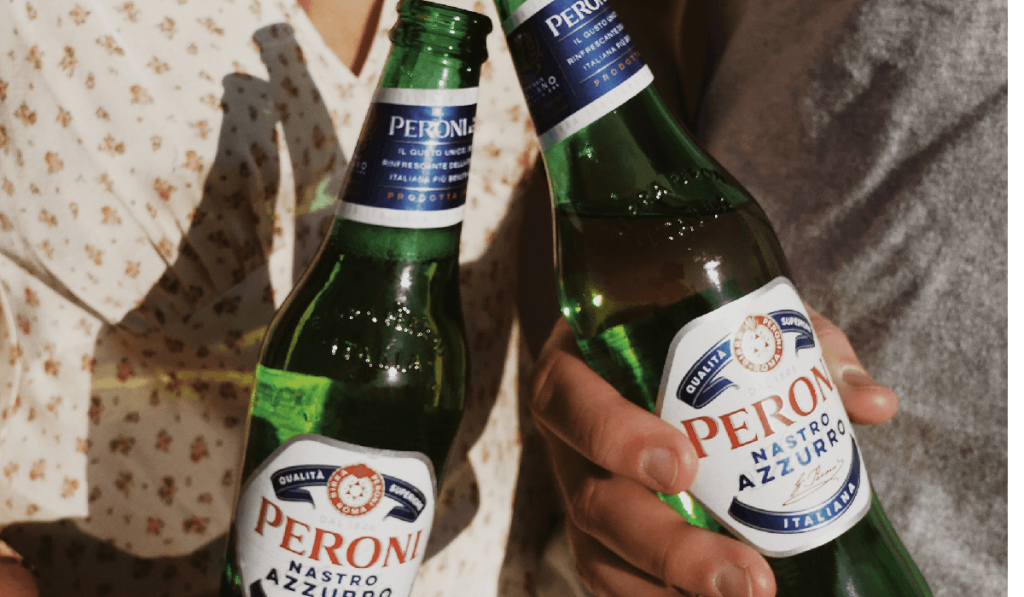 Peroni Nastro Azzurro has launched a new loyalty programme, Club Peroni, to give consumers a “reason to choose the brand” in the crowded beer category.
Peroni Nastro Azzurro has launched a new loyalty programme, Club Peroni, to give consumers a “reason to choose the brand” in the crowded beer category.
Consumers wanting to sign up to the rewards scheme can do so in hospitality or retail venues, through QR codes on pack, for example, or on glasses in bars. Developed in partnership with agency Savvy Marketing, drinkers can earn points on the platform through purchasing Peroni, and either uploading receipts of the purchase if bought in-store, or of photos of themselves with the Peroni Bottle or Peroni branded glassware.
These points can then be exchanged in the ‘Reward Shop’ section of the website for a variety of prizes, including a chance to win event tickets or money-off coupons, free drinks, merchandise and experiences.
Current prizes in the Club Peroni shop include redeeming points for a free four-pack of Peroni 0.0, entries into a prize draw to win BST tickets (a London day festival of which Peroni is a partner), and a Ferrari racing cap (which Peroni officially partners).
Speaking to Marketing Week, lead digital marketing manager Martin Baxter at Asahi UK (which owns the Peroni brand) says that in a crowded category like Mediterranean lager, the new loyalty scheme could drive preference for the brand in bars or on shelf.
“The reason we brought it to the forefront is to give people a reason to choose Peroni over other brands in such a competitive space,” he says.
Domino’s CEO: Loyalty scheme ‘widens the moat’ on the brand
Loyalty schemes have obviously been a popular tactic for retailers for some time. For example, Tesco Clubcard turns 30 this year, with loyalty pricing being one of the most common ways of discounting for retailers through initiatives like Nectar Pricing and Clubcard Prices.
FMCG brands using loyalty schemes is a much rarer phenomenon. One notable example of a brand that tried a loyalty scheme was Coca-Cola, which launched a rewards programme in 2007 known as My Coke Rewards in the US and Coke Zone in the UK. The scheme was wound up in the UK by 2013, and overall, by 2017.
Ordinarily, loyalty schemes have a “transactional” element to them, which most FMCG brands lack given they are rarely the site of purchase themselves, instead selling through retail or hospitality customers, notes Baxter. This can make it trickier for consumer goods brands to have loyalty schemes compared to retailers.
However, in the case of Peroni, it can offer “additional benefits” from the assets in its portfolio, he says, including its partnerships with BST and Ferrari.
Cruzcampo on its £10m push to stand out in the crowded lager market
Rather than competing with the loyalty schemes already owned by retailers and bars, Club Peroni is designed to “integrate” with existing programmes. For example, the scheme may enable a consumer to redeem their points for money off through a supermarket’s loyalty programme.
While loyalty schemes from individual brands within the food and drink sector are still rare, there is a strong appetite for such programmes from brands, Peroni states. Research it carried out among its customers found 88% of drinkers say they’d join a loyalty scheme from their favourite drinks brands.
Consumers now have a level of familiarity with these kinds of schemes, it believes, meaning they are used to using loyalty programmes in their spending habits.
With the beer brand only just having launched its scheme, Peroni is in something of a “learning period”, says Baxter. It is going to drive sign-ups and see how consumers react to the scheme, before looking to do more with it down the line.


